- Home
- slideshows
- miscellaneous
- We visited Abercrombie's store to see just how much the brand has changed - here's what we found
We visited Abercrombie's store to see just how much the brand has changed - here's what we found
We headed to an Abercrombie store in lower Manhattan on a sunny Thursday afternoon.

From the outside, the store looks dark and it's hard to see in. We approached with caution, remembering its dimly lit stores of the past.
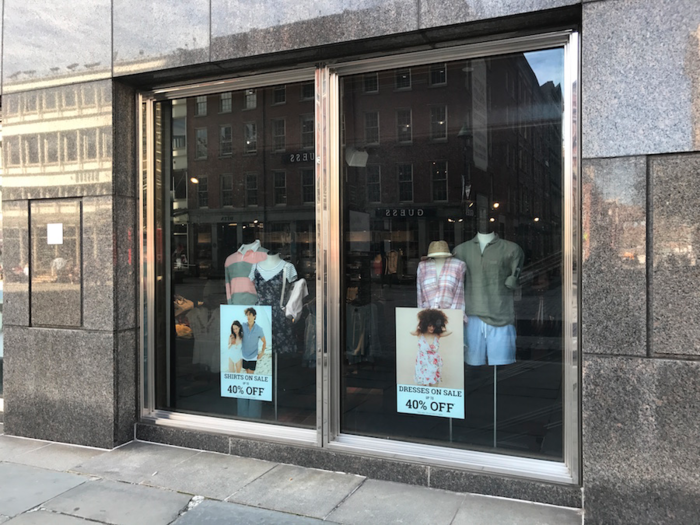
Instantly, we can see its oversexualized ads have been toned down and there are no topless models to greet customers.
Instinct tells us to recoil a little as we open the door. But we are pleased to find that there is no booming music and only a faint whiff of cologne.
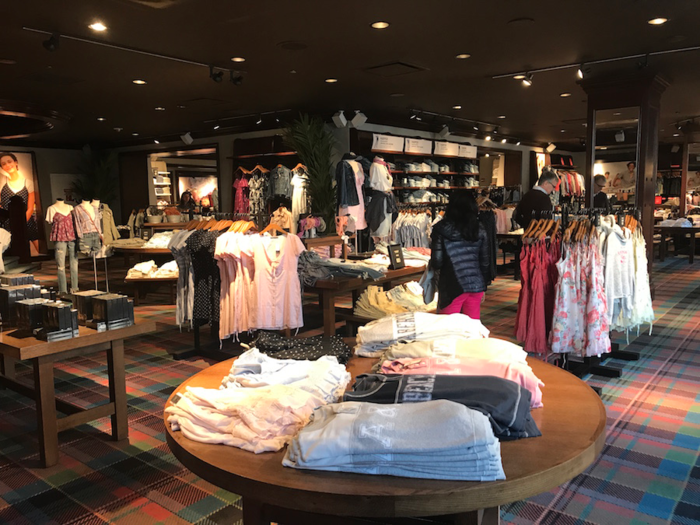
On the first impression, the store appeared to be well organized.
The store is brighter but the decor harks back to its former days. The imposing faux mahogany furniture and tartan carpets feel dated.
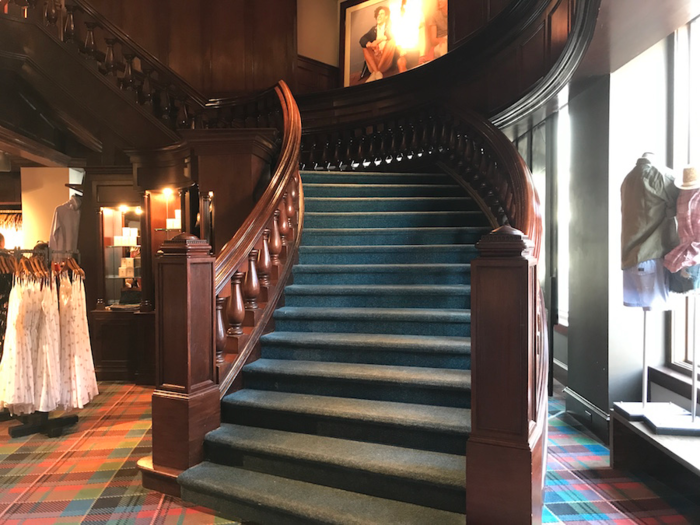
The company has made a significant investment in its stores over the past year – closing 39 locations, downsizing 16, and creating seven new prototype stores.
"We still think the store has a role in the future of retail," Joanne Crevoiserat, the chief operating officer at Abercrombie & Fitch, told Business Insider in March.
The first floor is devoted to womenswear with swimwear at the front of the store.
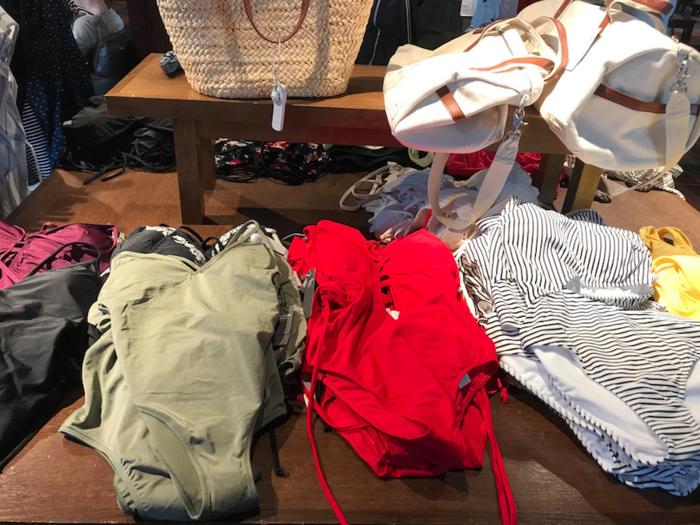
They also carried swimwear accessories.
Abercrombie is insistent about not being seen as a teen retailer.
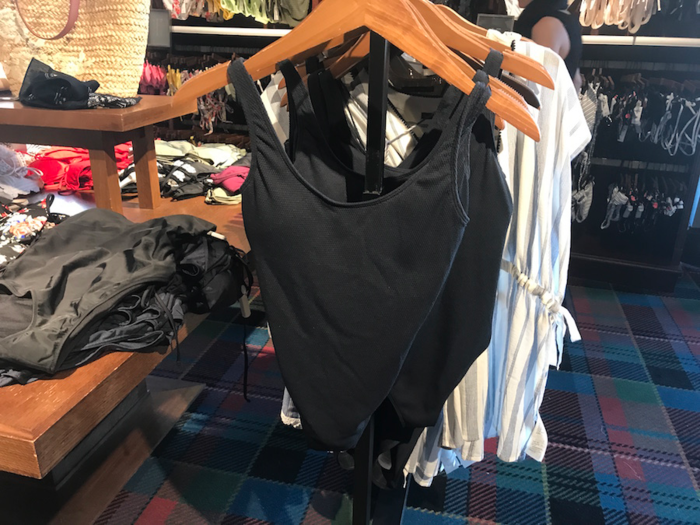
Some of its designs could appeal older consumers.
But it's hard to imagine many of these clothes being appropriate for anyone else but teens.
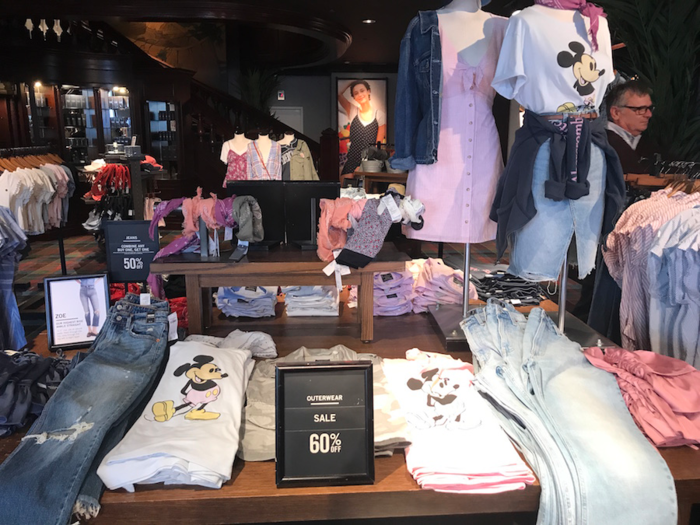
A lot of the clothing was very similar to its teen sister brand Hollister.
According to Horowitz, the brand is making a push to improve the quality of its products. "This is our differentiator," she told The Street on Wednesday.

Some items still looked flimsy.
In 2014, Abercrombie's former CEO, Mike Jeffries, initiated a move to ditch the brand's signature logo from clothing. Despite this, we still find a ton of clothing with logos on.
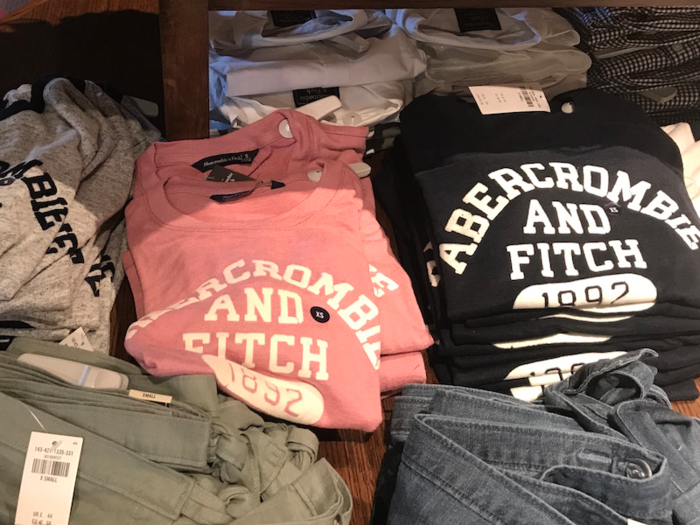
We saw the company's logo on quite a few items.
In some cases, it does feel infinitely more subtle than before.
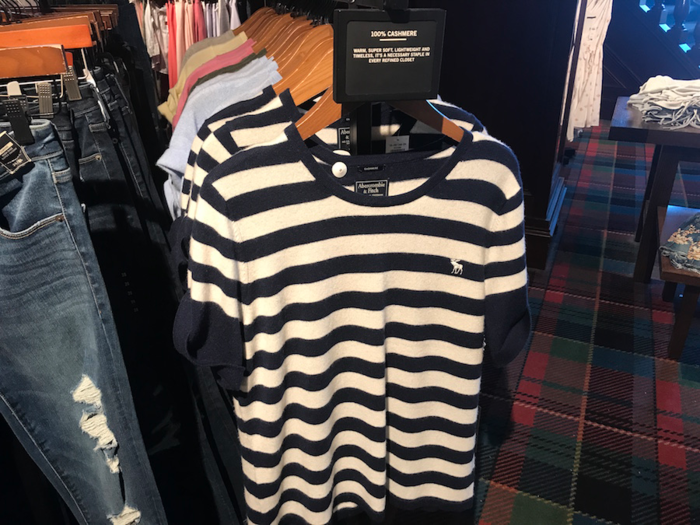
Logos are still present on clothing items, but it's not as obvious.
The company said it would be scaling back on promotions in the future.
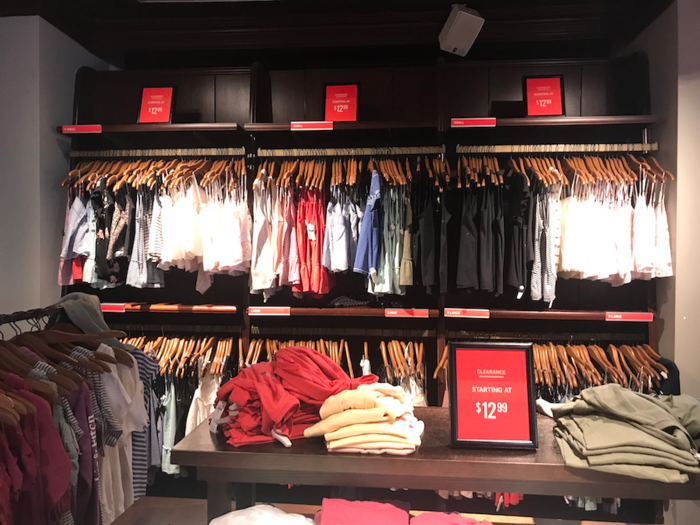
Most of this store was on sale and there was a small section dedicated to clearance items.
The denim section is easy to shop. One wall is stacked full of different styles and there was a buy-one-and-get-one-free offer available.
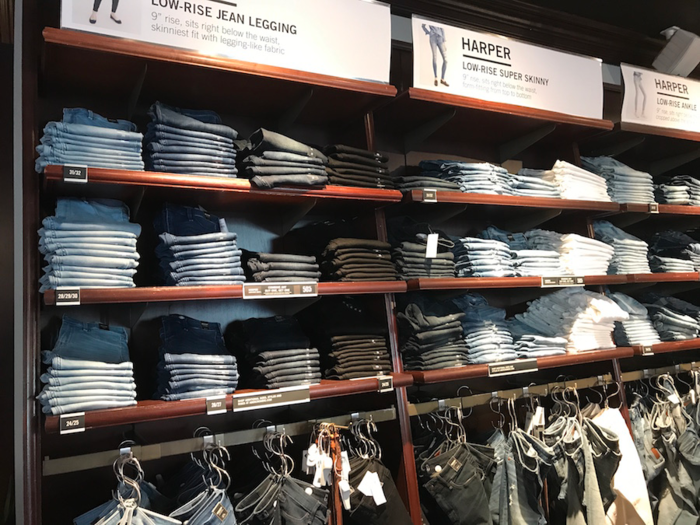
Horowitz told Business Insider in March that denim was one of its most successful areas in 2017.
Its push into omnichannel is apparent in store with its "buy online pick up in store" services.

There were also signs informing customers that they can purchase products in store and have them shipped home at no cost.
Next, we head to menswear.
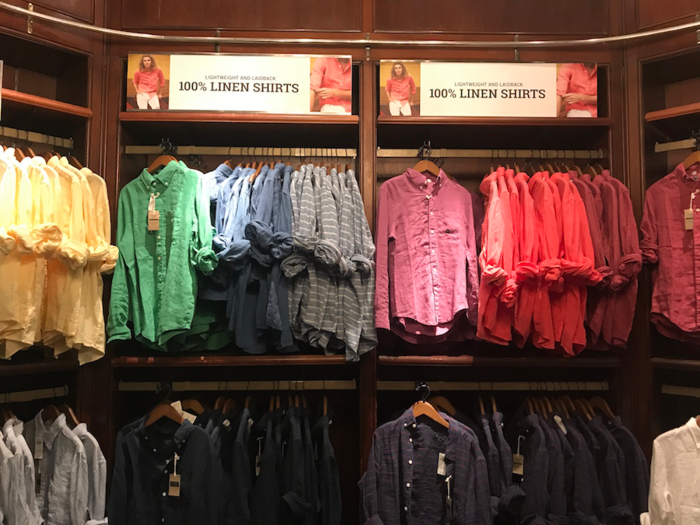
Linen shirts in multiple colors were prominently placed.
Logos are ramped up here.
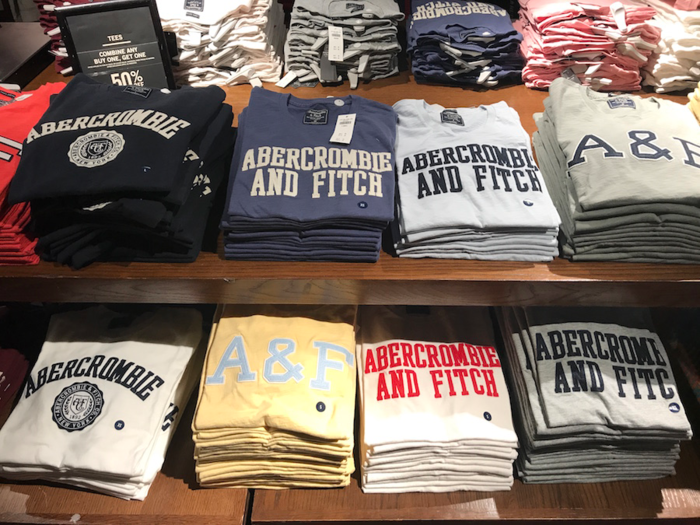
It was hard to escape the logo in the men's section.
The majority of clothing was on sale – including core products such as chinos and shirts.

The chinos came in a range of colors.
Menswear definitely felt more appropriate for older consumers.
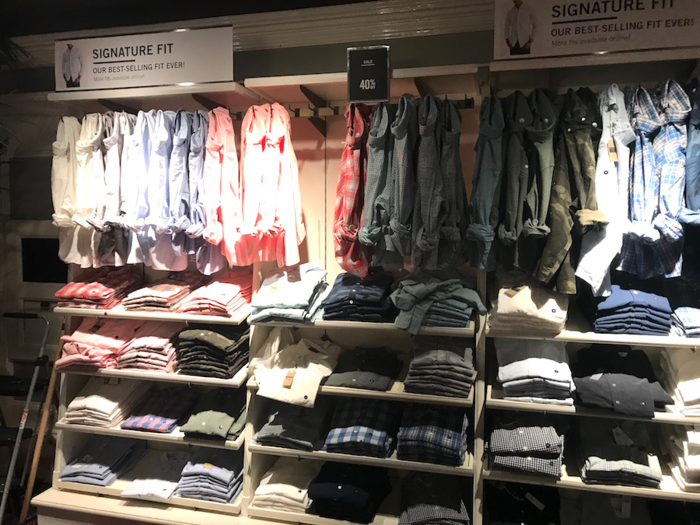
There was a good selection of plain shirts, which could appeal to a range of male consumers.
The biggest difference in the stores was its ad campaigns in both men's and women's wear. Abercrombie has ditched its shirtless male models and is instead opting for a more down-to-earth look.
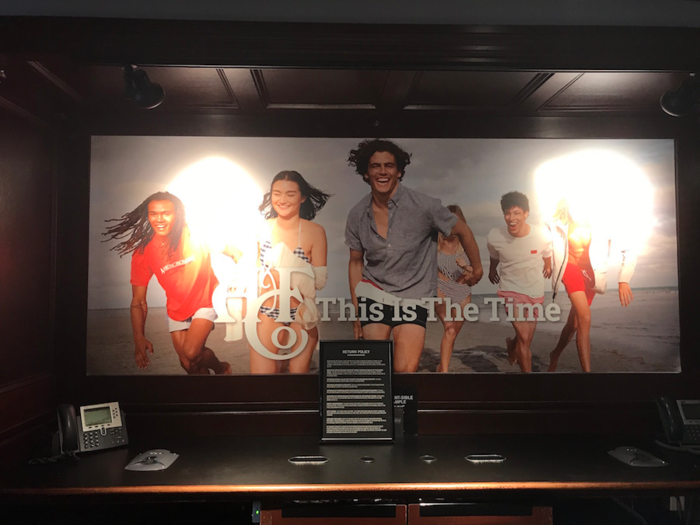
There's definitely more of a focus on an outdoorsy lifestyle.
The shirtless models have also been removed from its shopping bags.
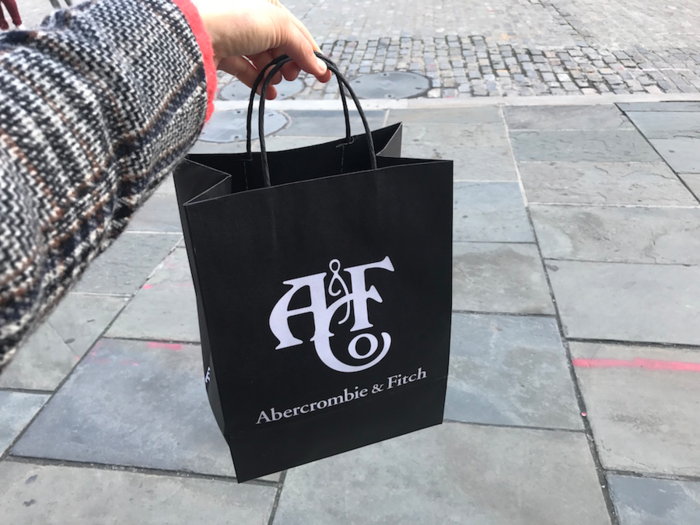
Our verdict: The lights were on, the cologne had but almost gone, and the sales assistants were wearing shirts. This is definitely a new era for Abercrombie.
Overall, we were impressed with the shopping experience and it was evident that the turnaround efforts are having an impact. However, without a complete remodel of stores, it's impossible not to hark back to former days.
Popular Right Now
Popular Keywords
Advertisement